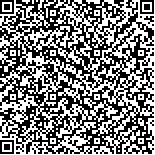| 摘要: |
| 独立通风笼具(IVC)的净化空调系统可形成贴近实验动物周围的饲养环境即饲养微环境,饲养微环境是保证实验动物福利的关键。为研究IVC笼盒内小鼠饲养微环境的控制方法以提升IVC净化空调系统性能,本文运用数值模拟和实验相结合的方法对某高校一间SPF级实验动物房中IVC系统的饲养微环境特性进行研究。结果表明:IVC 笼盒内部饲养微环境受笼盒上送上回的系统形式和气力(水力)失调影响显著,同一笼架不同笼盒的送风风速变化范围在2.79~4.94 m/s之间;笼盒内饲养微环境速度场分布不均,送风风速为2.97、4.94 m/s时送风口侧截面平均风速分别较回风口侧高54.7%、60.4%,当送风风速为4.94 m/s时小鼠背部部分风速达到0.3 m/s以上,超过规范限值;饲养微环境速度场分布又进而影响温湿度和污染物质量浓度分布。在实际应用中应以空气分布最不利处笼盒为设计基准,考虑各参数相互作用,并增设笼盒末端调控装置以优化饲养微环境状态并改善IVC净化空调系统性能。 |
| 关键词: IVC 饲养微环境 控制方法 实验动物福利 |
| DOI: |
| Received:January 25, 2022Revised:February 25, 2022 |
| 基金项目:本文受湖南省重点领域研发计划( 2020DK2003) 和湖南省科技成果转化及产业化计划( 2020GK2077) 资助。 |
|
| Research on the Control Method of Feeding Microenvironment of Individually Ventilated Mouse Cages in Barrier Environment |
|
Gong Guangcai1, He Xizhi1, Chen Mengjun1, Chen Xiang1, Peng Pei1, Yu Wangyi2
|
| (1.College of Civil Engineering, Hunan University;2.Animal Lab Center, Hunan University of Chinese Medicine) |
| Abstract: |
| The air-conditioning system of an independent ventilation cage (IVC) often controls the cage-level and room-level environments. However, compared with the room-level macroenvironment, the surrounding environment of laboratory animals, known as the animal feeding microenvironment, plays a key role in improving their welfare. To optimize the control method of the feeding microenvironment and the performance of the IVC air-conditioning system, a heat transfer model was established and the IVC mouse feeding microenvironment was simulated using computational fluid dynamics models. The microenvironment and macroenvironment parameters were also measured experimentally. The results demonstrate differences between the IVC mouse feeding microenvironment and macroenvironment parameters. The air supply speed in the IVCs at different locations in the same cabinet ranged from 2.79 to 4.94 m/s, which changed the velocity field in the cage. At supply air speeds of 2.97 and 4.94 m/s, the average wind speed at the inlet side was 54.7% and 60.4% higher than that at the outlet side, respectively. When the air supply speed reached 4.94 m/s, the wind speed behind the mouse exceeded 0.3 m/s, which is beyond the specified limit. The velocity field also affected the temperature, humidity, and pollutant concentration distribution. These results demonstrate that the IVC air-conditioning system should be designed based on cages with the worst hydraulic balance to improve the feeding microenvironment and ensure the welfare and quality of laboratory animals. |
| Key words: IVC feeding microenvironment control method laboratory animal welfare |


